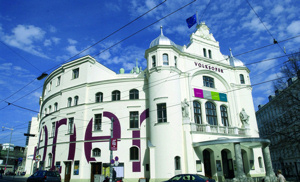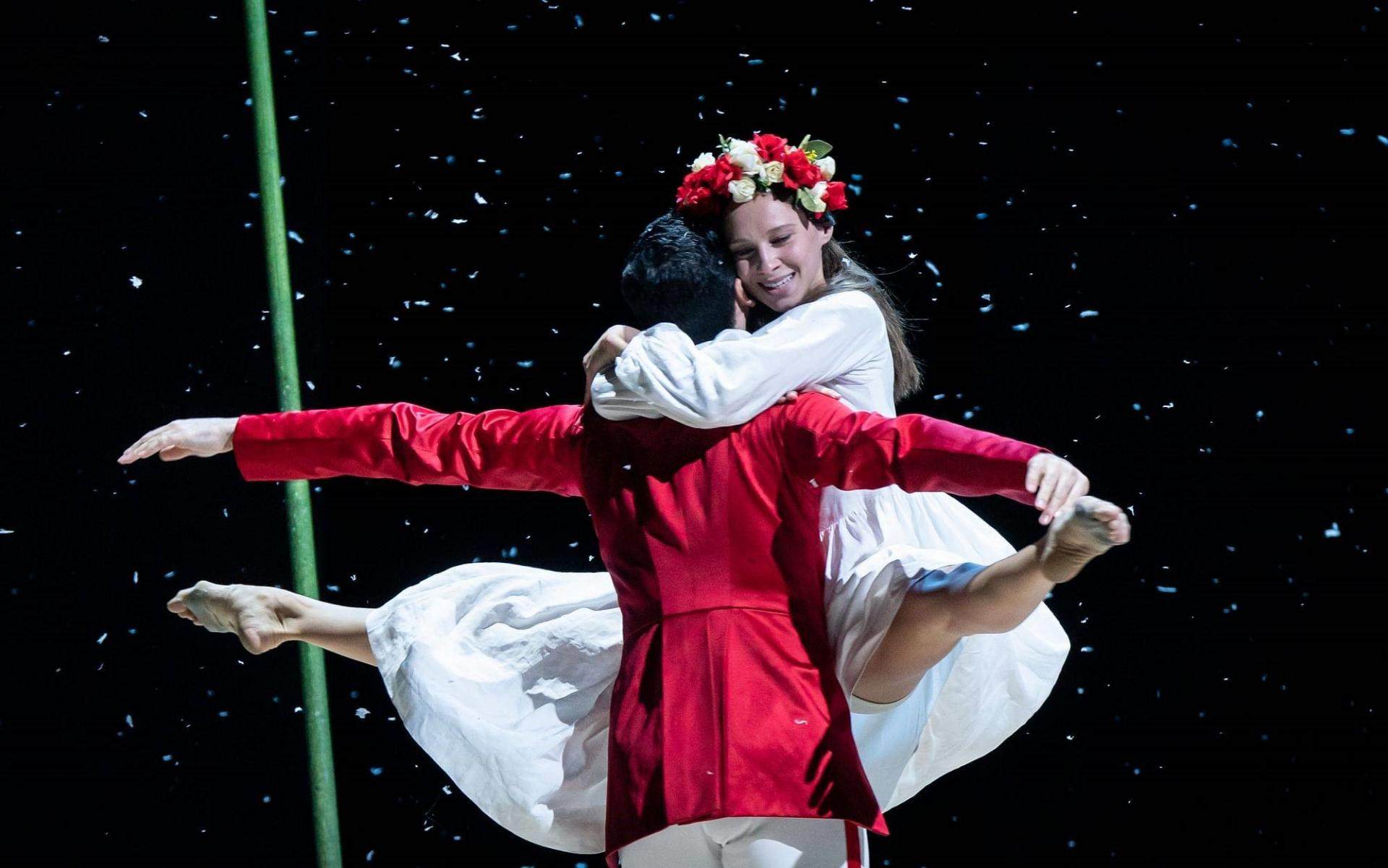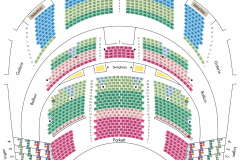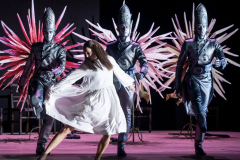Jolanthe and the Nutcracker Volksoper
Mo | Tu | We | Th | Fr | Sa | Su |
Musical theatre piece based on the opera and ballet by Peter IljitschTschaikowski
In German language with German surtitles
Synopsis
Princess Jolanthe is blind. Her father, King René, keeps this a secret from her. She lives in a walled garden, cared for by a well-functioning court.
Jolanthe has a great gift of imagination. In her mind's eye, she sees herself growing from a little girl into the teenager she is today, in the midst of a fairy tale world that seems completely real to her.
The little girl she was, is becoming more and more distant from her. Jolanthe wonders why her life is no longer as carefree as it used to be. She suspects that she is missing something, but she doesn’t know what it is.
Jolanthe is cared for by her nurse and two companions, who protect her from any missteps or pain. They put her to sleep. Jolanthe dreams of a fairy tale landscape with a prince in the shape of the Nutcracker.
Almerik, the king’s new armour-bearer, is warned by Bertram and Martha not to exchange so much as a word with Jolanthe. The king arrives accompanied by Ibn Hakia, a doctor who is to examine her. For Jolanthe’s healing, the king is willing to make any sacrifice.
In her dream, Jolanthe sees how oppressive she experiences her father’s protection. He appears to her as a threatening mouse king. The doctor Ibn Hakia explains that Jolanthe will only see, if she realises that she is blind and has the desire to see entirely on her own. Mind and body are interdependent, he says. The king thinks the risk is too high and refuses the treatment. Jolanthe’s imagined world turns into a nightmare in which men become frightening figures.
Robert and Vaudemont are on their way to King René’s court, Robert is to be married to Jolanthe. He does not want to marry Jolanthe because he is in love with another woman. Robert and Vaudemont get lost. They find the walled garden and ignore the warning that anyone who enters it is doomed to die.
Vaudemont discovers the sleeping Jolanthe without knowing who she is and falls in love instantly. Robert is convinced that she is an enchantress and leaves to get help.
Jolanthe offers wine. Vaudemont wonders whether the wine is poisoned. While Vaudemont drinks his wine, Jolanthe sees a love scene in her imagination.
PAUSE
Once again we see Robert going to get help and Vaudemont drinking the wine. But this time Jolanthe and him have a conversation. Vaudemont asks her to give him a red rose as a souvenir. When she offers him twice a white one instead, he realises that she is blind. Vaudemont explains to her what light and sight are. These first experiences of love are not fabulously beautiful for Jolanthe, but deeply confusing, unsettling and painful.
The court and the king find Jolanthe together with Vaudemont. Jolanthe reproaches her father for never having told her the truth about her blindness. She says she will undergo treatment if her father wishes. At that point, Ibn Hakia threatens to give up the possibility of a treatment.
All of a sudden, the king sees his opportunity: He addresses Vaudement, points out the warning that intruders would be killed and announces his death sentence. No one, apart from the doctor, can understand this cruel punishment from the benevolent king. Jolanthe urges the doctor to treat her. She is willing to do anything to save Vaudemont’s life. Through her inner eye, we see Jolanthe confront and overcome her fears.
When Robert returns to save his friend Vaudemont, he recognises King René. Vaudemont realises that he is in love with his friend’s fiancée. Robert confesses to the king that he does not want to marry Jolanthe. The king agrees to the marriage between Vaudemont and Jolanthe. Bertram appears and reports that the treatment was a success. Jolanthe sees! The world has changed. Jolanthe does not know what she sees. Everyone praises God, including Jolanthe who is happy with Vaudemont.
Jolanthe thinks back to all her struggles and decides to recolour reality using her imagination.
Art makes reality bearable.
Program and cast
Director: Lotte de Beer
Choreography: Andrey Kaydanovskiy
Set design: Katrin Lea Tag
Costumes: Jorine van Beek
Individual costumes inspired by: Mark Ryden & Nicoletta Ceccoli
Lighting: Alex Brok
Volksoper Vienna
Public transport:
Underground line U6
Trams 40, 41, 42
Bus 40A
Stop "Währinger Straße / Volksoper"
A taxi stand is located at Währinger Gürtel.
Parking garages in WIFI and AKH
The Volksoper is Vienna’s main stage for operetta, opera, musicals and ballet, offering sophisticated musical entertainment. Colourful, eclectic and full of vitality, it is the only theatre dedicated to the genre of operetta.
Operetta belongs to Vienna and Vienna installed it at the home of operetta, Volksopera Vienna, which thereupon became the leading operetta house in the world. First class singers, actors and dancers together with a versatile orchestra cunjure up a musical firework display every evening.
Johann Strauss, Franz Lehár, Emmerich Kálmán wrote their world famous beloved melodies for operettas such as “The Fledermaus”, “The Merry Widow” and “The Csárdás Princess”. A visit to at least one of these operettas at the Volksopera Vienna is a must for every visitor to Vienna!
Also performed are operas from the 18th, 19th and 20th centuries, as well as classic musicals and ballet. In addition, the Volksoper has a fifth longstanding and proven speciality: it stages soirées, cabaret and burlesque performances under the name of “Volksoper Spezial”.
In the repertory theatre, which seats 1,337 persons, some 300 performances of around 35 different productions are staged every year between September and June.

 EN
EN DE
DE IT
IT FR
FR ES
ES RU
RU JP
JP RO
RO
 Seating plan
Seating plan 
